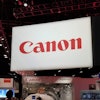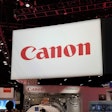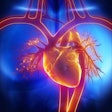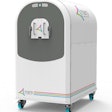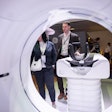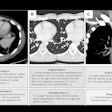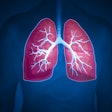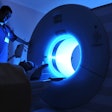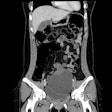CT shows that tracking volume doubling times of the solid component of lung adenocarcinomas can help clinicians predict patients' recurrence-free survival and overall survival after surgery, researchers have reported.
"[Our study found that] in lung adenocarcinomas manifesting as part-solid lesions on chest CT, the presence of a solid-component volume doubling time of less than 200 days was the only evaluated … metric that showed significant independent associations with both recurrence-free survival and overall survival," wrote a team led by Dr. Yura Ahn of Asan Medical Center, Seoul, South Korea. The results were published on 12 February in the American Journal of Roentgenology.
In lung adenocarcinomas manifesting as part-solid lesions, studies have shown greater prognostic importance for the volume of the solid component than of the whole nodule, the group noted. However, assessments of lesion growth rates have historically focused on the volume doubling time of the whole lesion. To address the knowledge gap, Ahn and colleagues conducted a study that included 122 patients with lung adenocarcinoma manifesting as a part-solid lesion.
The participants underwent at least two preoperative chest CT exams; these exams showed either solid-component growth or at least two years of stability. The investigators used semiautomated software to perform 3D segmentations of whole lesions and their solid components and calculate their volumes, then used these volumes to evaluate volume doubling time for the whole lesion and for its solid components.
For the 81 patients in whom the lesion's ground-glass component increased, the researchers calculated volume doubling time of this component. They then evaluated the prognostic value of volume doubling time for the whole lesion; volume doubling time for the lesion's solid component; and volume doubling time for the ground-glass component for recurrence-free survival and overall survival.
Median volume doubling time for the whole lesion was 921 days, while median volume doubling time for the lesion's solid component was 455 days and median volume doubling time for the ground-glass component was 1,000 days.
The team found the following:
- The only metrics showing significant associations with recurrence-free survival were volume doubling time for the lesion's solid component of less than 400 days (hazard ratio [HR] = 2.68, with 1 as reference), and less than 200 days (HR = 3.68).
- The only metrics showing significant associations with overall survival were volume doubling time for the lesion's solid component of less than 200 days (HR = 3.27) and volume doubling time for the whole lesion of less than 200 days (HR = 4.86).
 (Top left) Axial image from first chest CT examination shows part-solid nodule in right upper lobe. Diameter of whole nodule is 1.5 cm and of solid component is 0.5 cm. (Top right) Semiautomated 3D segmentations of nodule on first examination, including whole nodule (left) and solid component (right). Volume of whole nodule is 1.07 cm³ and of solid component is 0.02 cm³. Middle left: Axial image from last chest CT examination, performed 42.8 months later. Diameter of whole nodule has increased to 2.6 cm and of solid component has increased to 2.3 cm. (Middle right) Semiautomated 3D segmentations of nodule on last examination, including whole nodule (left) and solid component (right). Volume of whole nodule has increased to 5.2 cm³ and of solid component has increased to 4.4 cm³. VDTw was 565 days (less than neither 200-day or 400-day threshold), and VDTs was 168 days (less than both 200-day and 400-day thresholds). Patient underwent right upper lobectomy 1 day after last CT examination. Pathologic assessment of resected nodule yielded diagnosis of adenocarcinoma with predominant acinar histologic subtype. Pathologic stage was pT1cN0. (Bottom) Axial contrast-enhanced fat-suppressed T1-weighted image from MRI examination of brain performed 3 years postoperatively shows mass in right parietotemporal lobe; mass was resected and found to represent metastatic adenocarcinoma. Patient was confirmed to be alive 8.7 years after right upper lobectomy. VDTs=volume doubling time of solid component, VDTw=volume doubling time of whole lesion. Images and caption courtesy of the AJR.
(Top left) Axial image from first chest CT examination shows part-solid nodule in right upper lobe. Diameter of whole nodule is 1.5 cm and of solid component is 0.5 cm. (Top right) Semiautomated 3D segmentations of nodule on first examination, including whole nodule (left) and solid component (right). Volume of whole nodule is 1.07 cm³ and of solid component is 0.02 cm³. Middle left: Axial image from last chest CT examination, performed 42.8 months later. Diameter of whole nodule has increased to 2.6 cm and of solid component has increased to 2.3 cm. (Middle right) Semiautomated 3D segmentations of nodule on last examination, including whole nodule (left) and solid component (right). Volume of whole nodule has increased to 5.2 cm³ and of solid component has increased to 4.4 cm³. VDTw was 565 days (less than neither 200-day or 400-day threshold), and VDTs was 168 days (less than both 200-day and 400-day thresholds). Patient underwent right upper lobectomy 1 day after last CT examination. Pathologic assessment of resected nodule yielded diagnosis of adenocarcinoma with predominant acinar histologic subtype. Pathologic stage was pT1cN0. (Bottom) Axial contrast-enhanced fat-suppressed T1-weighted image from MRI examination of brain performed 3 years postoperatively shows mass in right parietotemporal lobe; mass was resected and found to represent metastatic adenocarcinoma. Patient was confirmed to be alive 8.7 years after right upper lobectomy. VDTs=volume doubling time of solid component, VDTw=volume doubling time of whole lesion. Images and caption courtesy of the AJR.
The takeaway? Volume doubling time is "widely accepted as a key indicator of the growth rate of lung nodules, reflecting biologic aggressiveness and prognosis for those nodules corresponding with cancer," the group wrote. "For part-solid lesions, volume doubling time of the solid component may be expected to have greater prognostic utility than volume doubling time of the whole lesion, given the greater association of the solid component than ground-glass component of such lesions with pathologically invasive cancer."
The complete study can be found here.


